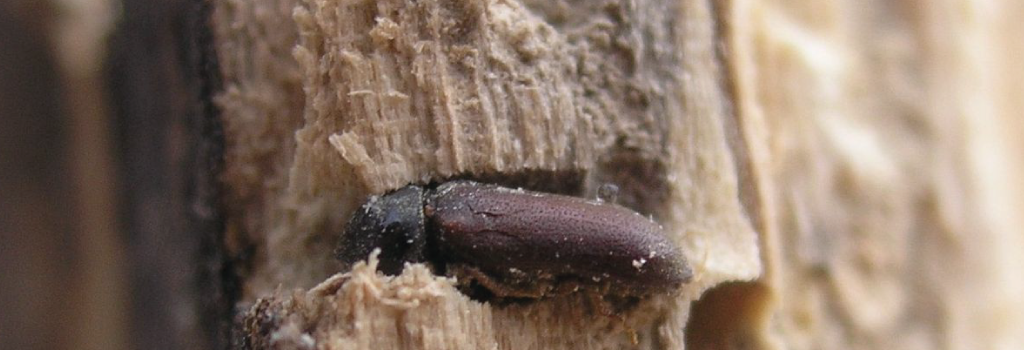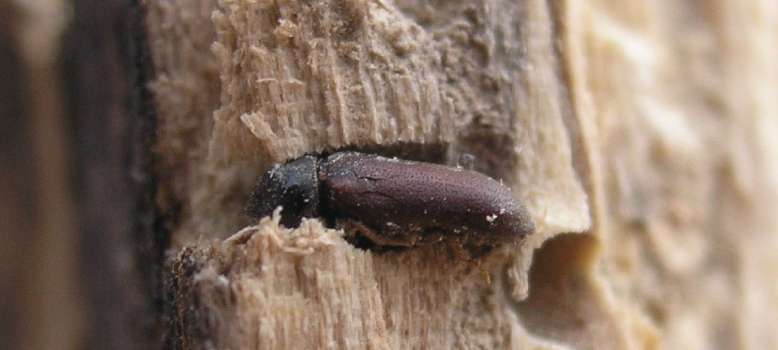The majority of furniture in Indian households is made of wood or composites of wood. Wood-borer larvae or powder post beetle larvae are pests that can damage wooden structures and furniture.
Wood Borer Pest Control
Adults are medium sized (3/4 inch long) long-horned brown to black beetles with distinctive gold-yellow markings. This is one species of a group of beetles called “long horned beetles.” Whitish larvae have three pairs of small legs of the first three body segments behind the head capsule. Underneath the bark and in the heartwood, larvae produce tunnels that are oval to almost round in cross section because of the shape of the larvae. Larvae in this group of beetles are also called “round headed borers.” (See also Buprestidae.)
Adults of this and other species often occur indoors after they emerge from firewood. Adults of a related species, the painted hickory borer, M. caryae(Gahan), occur in the spring. Larvae infest hickories and mesquite. Larvae of another similar species, Placosternus difficilis (Chevrolat) commonly infest mesquite. Adults of the redheaded ash borer, Neoclytus acuminatus (Fabricius), have a narrow body with a reddish thorax and light brown wing covers (elytra) marked with four yellow lines on each. The yellow lines are slanted downward toward the middle, giving the appearance of chevrons (a series of “V’s”) across the back. The antennae are rather short and the long legs are thin and fragile. Redheaded ash borers feed in many species of tree trunks and branches including those of oak, ash, elm and even grapes. None of these species will attack cured structural timbers in the home. However, the old house borer, Hylotrupes bajulus (Linnaeus), does fed on structural timbers. It produces oval to round exit holes about 1/4 inch in idamter. Adults are 1/2 to 1 inch long, grayish balck to dark brown with yellow-gray hairs on the front part of the body and to elevated shiny black areas in the shield behind the head (pronotum). The wing covers (elytra) are marked with two grayish markings which may be rubbed off in some specimens.
Life Cycle
Larvae hatch from eggs laid in bark crevices. Visible symptoms of infestation are wet spots and frass on the bark of living black locusts. Later, larvae tunnel into the inner bark and construct cells in which they spend the winter months. In a year the larvae are fully grown and are about an inch in length
Habitat and Food Source(s)
Mouthparts are for chewing. Black locust tree trunk and branches. Adult beetles are frequently found feeding on goldenrod or other flowers in the fall




